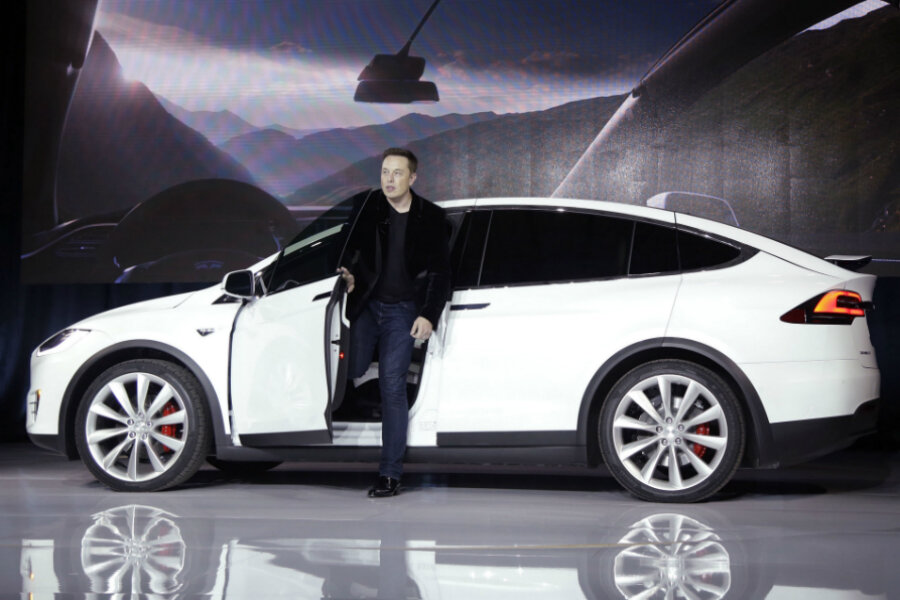Elon Musk upgrades radar steering for Tesla: Real progress?
Loading...
Tesla Motors Inc. plans to roll out major software upgrades that could have prevented the death of an Ohio man who crashed into a tractor-trailer last May while driving in Tesla’s so-called Autopilot mode, chief executive officer Elon Musk announced Sunday.
For nearly two years, Tesla has used radar technology to supplement each car’s camera-based automated steering systems. With the upgrades, which are expected within two weeks, radar will become primary.
While the company touts what is clearly a significant update, it remains to be seen whether the upgraded radar-based system will prove more effective in the real world. Mr. Musk himself acknowledges the system will never steer clear of every hazard.
“Perfect safety is really an impossible goal,” Musk told reporters on a conference call Sunday, as The New York Times reported. “There won’t ever be zero fatalities. There won’t ever be zero injuries.”
The National Highway Traffic Safety Administration launched an investigation into the autopilot crash that killed Joshua Brown, the Ohio entrepreneur who was driving his Tesla at 74 mph – 9 mph above the speed limit – on a highway in Florida when the vehicle failed to recognize a white truck against a bright sky. Neither the car nor its driver applied the brakes.
Tesla explained the coming improvements to the NHTSA, Musk said, noting the authorities appear “pretty happy with these changes.”
Currently, the Tesla system alerts drivers when their hands have been off the wheel too long, slowing the vehicle if the driver doesn't respond. But some users ignored 10 warning signs to keep their hands on the wheel in just one hour, demonstrating how some have become too trusting of the technology.
“I look down at my phone a little more than I used to,” Jason Hughes, a Tesla autopilot user from North Carolina, told The Wall Street Journal in July. “People are overly confident in it, in my opinion. They think it can do magical things, but it can’t go beyond what its sensors tell it.”
The system updates will give drivers more frequent alerts for drivers to put their hands on the steering wheel while traveling at higher speeds. If they ignore a third warning within one hour, the auto-steering feature will stop until the car is stopped and restarted.
The most significant upgrade, Musk said Sunday in a blog on the company’s website, is in the way its radar will make sense of the world around it:
Photons of that wavelength travel easily through fog, dust, rain and snow, but anything metallic looks like a mirror. The radar can see people, but they appear partially translucent. Something made of wood or painted plastic, though opaque to a person, is almost as transparent as glass to radar.
On the other hand, any metal surface with a dish shape is not only reflective, but also amplifies the reflected signal to many times its actual size. A discarded soda can on the road, with its concave bottom facing towards you can appear to be a large and dangerous obstacle, but you would definitely not want to slam on the brakes to avoid it.
Therefore, the big problem in using radar to stop the car is avoiding false alarms. Slamming on the brakes is critical if you are about to hit something large and solid, but not if you are merely about to run over a soda can. Having lots of unnecessary braking events would at best be very annoying and at worst cause injury.
The Tesla autopilot system also includes a "geocoded whitelist" of objects, such as road signs and bridges, will help prevent false positives (and unnecessary braking).
In addition to Tesla's camera and image processing system, the solution that the company has included in the forthcoming upgrade will compare multiple radar snapshots, which are taken 10 times per second, in sequence to create a three-dimensional picture of the real world. It will also learn from human drivers by compiling behavior observed across its full fleet of vehicles.
“This is not going from bad to good. It’s going from good to, I think, great,” Musk told reporters.







